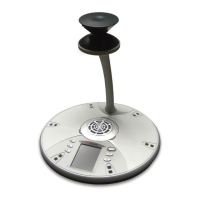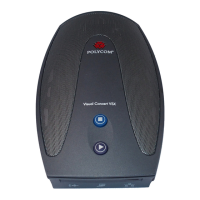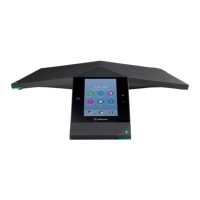Polycom CX5500 Unified Conference Station Administrator’s Guide 1.1.0
Polycom, Inc. 323
General Video Parameters
If 0, video calls only use the full screen layout if it is explicitly selected by the user. If 1, video calls use the full
screen layout by default, such as when a video call is first created or when an audio call transitions to a video
call)
When enabled, video transmission to the far side begins when you start a call. When disabled, video
transmission does not begin until you press the Video > Start Video soft keys. This parameter controls video
sent to the far side. Video from the far side will always be displayed if it is available, and far side users can
control when to send video.
Allows the user to select the mode to use when using SIP protocol only.
The default call rate (in kbps) to use when initially negotiating bandwidth for a video call.
video.dynamicControlMethod
If 1, the first I-Frame request uses the method defined by video.forceRtcpVideoCodecControl and
subsequent requests alternate between RTCP-FB and SIP INFO.
If 0, video is not enabled and all calls—both sent and received—are audio-only. If 1, video is sent in outgoing
calls and received in incoming calls if the other device supports video.
When non-zero, an extra I-frame is transmitted after video starts. The amount of delay from the start of video until
the I-frame is sent is configurable up to 10 seconds. Use a value of 2 seconds if you are using this parameter in a
Microsoft Lync environment.
After sending an I-frame, the phone will always wait at least this amount of time before sending another I-frame in
response to requests from the far end.
video.iFrame.onPacketLoss
If 1, an I-frame is transmitted to the far end when a received RTCP report indicates that video RTP packet loss
has occurred.
The maximum call rate allowed. This allows the administrator to limit the maximum call rate that the users can
select. If video.callRate exceeds this value, this value will be used as the maximum.
The optimal quality for video that you send in a call or a conference. Use motion if your outgoing video will have
motion or movement. Use sharpness or Null if your outgoing video will have little or no movement. Note: If
motion is not selected, moderate to heavy motion can cause some frames to be dropped.
